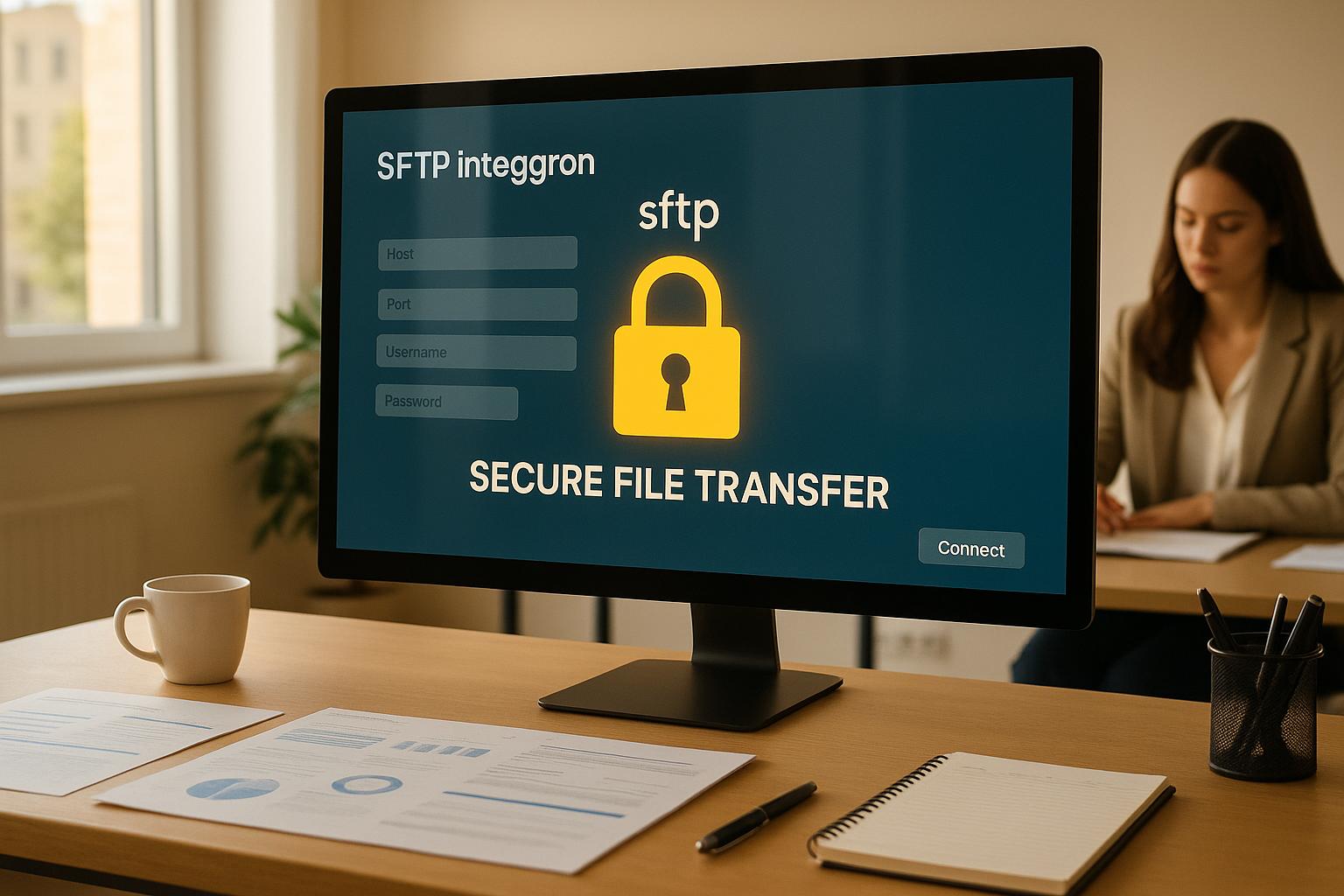GDPR has strict rules for email marketing. Businesses must secure explicit consent, provide clear communication, and make opting out easy. Here’s a quick summary of the key points:
- Consent: Users must opt in - no pre-checked boxes allowed.
- Transparency: Clearly explain how data will be used.
- Unsubscribe: Simple, immediate opt-out options are required.
- Preference Centers: Let users choose how often and what types of emails they receive.
- Data Security: Use encryption and strict access controls to protect user data.
Failing to comply can result in fines up to €20 million or 4% of annual revenue. But compliance builds trust and improves email engagement.
GDPR compliance in Email Marketing [Step-by-step Checklist] | Email Marketing Course (14/63)
GDPR Email Preference Requirements
The GDPR lays out clear rules for managing email preferences. Businesses must secure explicit consent, make unsubscribing straightforward, and be transparent about how they handle user data. These measures give users control over how they interact with email communications.
Getting User Consent
To comply with GDPR, businesses must secure explicit and informed consent before using personal data for email communications. This involves using opt-in methods that ensure users are fully aware and in control. Here's what that looks like:
| Consent Requirement | Implementation Details |
|---|---|
| Explicit | Use unchecked boxes or clear opt-in prompts for email sign-ups. |
| Informed | Clearly explain how email data will be used for marketing purposes. |
| Documented | Keep detailed records of consent, including timestamps and language used. |
| Separate | Allow users to adjust specific communication preferences without requiring a full opt-out. |
| Reversible | Offer simple ways for users to withdraw their consent at any time. |
It's critical to maintain accurate records of consent. This includes saving the exact language from consent forms, timestamps of user actions, and any updates to their preferences. These records not only demonstrate compliance but also help track and respect user choices over time.
Unsubscribe Options
Once consent is obtained, businesses must make opting out just as easy. Every email should include a clear, visible unsubscribe link that processes requests immediately. Here’s what GDPR expects:
- Unsubscribe requests should be processed without delay.
- Users shouldn’t need to log in to update their preferences.
- Provide confirmation that changes to preferences were successful.
- Ensure unsubscribed addresses are automatically removed from future email lists.
These steps ensure users can easily manage their preferences without unnecessary hurdles.
Clear User Communication
Transparency about data practices is another cornerstone of GDPR compliance. Businesses need to explain their data handling in simple, straightforward language. Key points to address include:
- Purpose Statement: Clearly outline how email addresses will be used.
- Data Retention: Specify how long user data will be stored.
- User Rights: Explain how users can access, correct, or delete their personal information.
- Privacy Updates: Share how users will be informed about changes to data practices.
Regularly reviewing and updating these communication practices not only keeps businesses compliant but also builds trust with users. Clear, honest communication goes a long way in fostering positive relationships.
Setting Up a GDPR Preference Center
A GDPR-compliant preference center acts as the go-to spot for users to manage their consent and communication preferences. It’s designed to align with GDPR’s emphasis on user control and transparency, making it easy for individuals to understand and manage how their data is used.
Required Preference Center Features
To ensure your preference center is both user-friendly and compliant, it should include these key features:
| Feature | Purpose | Implementation |
|---|---|---|
| Granular Consent Options | Allow users to pick specific communication types | Provide choices like promotional emails, educational content, or product updates. |
| Frequency Controls | Let users manage how often they hear from you | Offer options such as daily, weekly, monthly, or quarterly communication. |
| Data Access Tools | Enhance transparency | Include functionality to download or export personal data. |
| Preference History | Keep a record of consent changes | Store timestamped logs of all updates made by users. |
Make sure any updates users make are automatically synced across all systems to avoid inconsistencies.
User-Friendly Design
A clear and intuitive interface is essential for a successful preference center. Here’s how to make it user-friendly:
- Clear Language: Avoid unnecessary legal jargon; stick to plain, simple explanations.
- Visual Hierarchy: Use colors and spacing to make primary actions stand out.
- Mobile Optimization: Ensure the preference center works seamlessly on all devices.
- Progressive Disclosure: Present options in smaller, digestible sections to avoid overwhelming users.
These design strategies help users navigate the center effortlessly while meeting compliance standards.
Compliance Tools
Incorporating the right tools is crucial for managing GDPR compliance effectively. Here are some must-haves:
- Consent Tracking: Keep a detailed, timestamped log of every consent change.
- Automated Syncing: Ensure that any updates to preferences are reflected across all systems in real time.
- Audit Trails: Maintain thorough records of all updates to assist with compliance audits.
- Security Measures: Protect user data with strong encryption and strict access controls.
sbb-itb-6e7333f
Data Security and Storage
To comply with GDPR's stringent user consent requirements, it's essential to implement robust security measures to safeguard email preference data.
Security Standards
Here are the key encryption and security protocols you should adopt:
| Security Layer | Standard | Purpose |
|---|---|---|
| Data in Transit | TLS (Transport Layer Security) | Protects data during transmission between systems |
| Data at Rest | AES-256 Encryption | Secures stored preference data in databases |
| Access Control | Role-based Access Controls | Restricts access to authorized personnel only |
| Monitoring | Real-time Security Logging | Detects and alerts on suspicious activities |
| Security Reviews | Penetration Testing | Identifies weaknesses in the system |
| Data Protection | DLP Tools | Prevents unauthorized access to sensitive data |
| Change Tracking | Audit Trails | Logs all modifications to preference data |
These measures should be paired with regular security reviews to maintain a comprehensive protection strategy.
Data Storage Rules
When storing email preference data, follow these best practices to ensure compliance:
- Active Subscriber Data: Retain preference data only while the subscriber relationship is active. After the relationship ends, maintain the data for a defined retention period, typically 6–12 months.
-
Inactive Subscriber Management: Automate processes for managing inactive accounts. For example:
- Flag accounts as inactive after 12–24 months of no activity.
- Launch re-engagement campaigns to reconnect with inactive users.
- If no response is received within 30 days, delete the data and log the deletion.
-
Consent Records: Maintain detailed records of all preference changes, including:
- Timestamps of modifications.
- The specific changes made.
- How consent was collected.
- The version of the privacy policy in effect at the time.
When working with external providers, ensure they adhere to these same storage protocols before integrating their services.
Third-Party Management
To find GDPR-compliant email service providers, consult the Email Service Business Directory and ensure they meet the following criteria:
| Requirement | Implementation Details |
|---|---|
| Data Processing Agreement | A formal contract defining data handling responsibilities |
| Security Measures | Verified encryption and protection protocols |
| Data Transfer Rules | Compliance with international data transfer regulations |
| Breach Notification | Procedures for reporting incidents within 72 hours |
Conduct regular audits of your vendors to confirm ongoing compliance with these standards. Keep documentation of security assessments, penetration tests, and remediation efforts to demonstrate diligence in case of regulatory inspections. This ensures your email preference system remains secure and fully compliant.
Conclusion
GDPR Benefits
Complying with GDPR in email preference management comes with a range of advantages. Recent data shows that 79% of consumers are more likely to trust companies that offer transparent privacy options and easy-to-use preference centers. This trust not only fosters stronger engagement but also helps build lasting relationships with your audience.
Failure to comply, on the other hand, can lead to steep penalties - up to €20 million or 4% of annual global turnover. By implementing robust email preference management systems, businesses can avoid these risks while reaping additional rewards:
| Benefit | Business Impact |
|---|---|
| Enhanced Trust | Better customer retention and higher engagement rates |
| Improved Data Quality | More accurate and up-to-date subscriber information |
| Reduced Risk | Lower exposure to fines and legal challenges |
| Better Performance | Higher email deliverability and open rates |
Action Items
To turn these benefits into tangible results, focus on strengthening your compliance efforts:
-
Conduct Regular Compliance Audits
Evaluate your consent collection methods, preference center features, and data storage practices. Identify gaps and update your processes accordingly. -
Update Technical Infrastructure
Select email marketing platforms that offer key GDPR-friendly features, such as:- Automated consent tracking
- Customizable preference centers
- Secure data storage
- Third-party compliance verification
-
Enhance User Experience
Make it easy for users to manage their preferences with:- Clear, straightforward language in all communications
- Granular options for controlling email preferences
- One-click unsubscribe functionality
- Detailed records of user consent
Taking these steps not only ensures compliance but also builds a stronger, more trustworthy relationship with your audience.
FAQs
What happens if a business doesn’t comply with GDPR rules for managing email preferences?
Failing to follow GDPR rules for email preference management can have serious repercussions for businesses. The penalties for non-compliance can be severe, with fines reaching up to €20 million or 4% of the company’s annual global revenue - whichever is greater. Beyond financial penalties, companies risk damaging their reputation, losing customer trust, and even facing legal action from individuals whose data rights are violated.
To steer clear of these risks, it’s crucial to handle opt-ins, opt-outs, and data storage in strict accordance with GDPR guidelines. Taking these steps not only ensures compliance but also demonstrates respect for your audience’s privacy and preferences, fostering stronger and more trustworthy relationships.
How can businesses create email preference centers that are easy to use and comply with GDPR regulations?
To make your email preference center both easy to use and compliant with GDPR, focus on keeping things clear, straightforward, and transparent. Offer users clear choices to opt in or out of specific email categories, and use simple, easy-to-understand language. Do not use pre-checked boxes for consent, as GDPR mandates that users take explicit action to confirm their preferences.
Make it hassle-free for users to update their preferences whenever they want. Include a clearly visible link in your emails that leads to the preference center, and ensure the update process is smooth and quick. Store user preferences securely and only gather the information you truly need for your email campaigns. Regularly audit your system to stay aligned with GDPR requirements and current best practices.
What key security practices should businesses follow to protect user data under GDPR guidelines?
To ensure compliance with GDPR and protect user data, businesses should take these key steps:
- Encrypt sensitive information during transmission and storage to block unauthorized access.
- Keep software up to date by applying patches regularly to fix security flaws and fend off cyberattacks.
- Restrict data access with role-based permissions, allowing only authorized personnel to handle sensitive information.
- Perform routine security audits to uncover and address potential vulnerabilities.
- Enforce strong password policies and promote the use of multi-factor authentication (MFA) for an added layer of security.
These measures help secure user data, minimize the chances of breaches, and ensure GDPR compliance.


